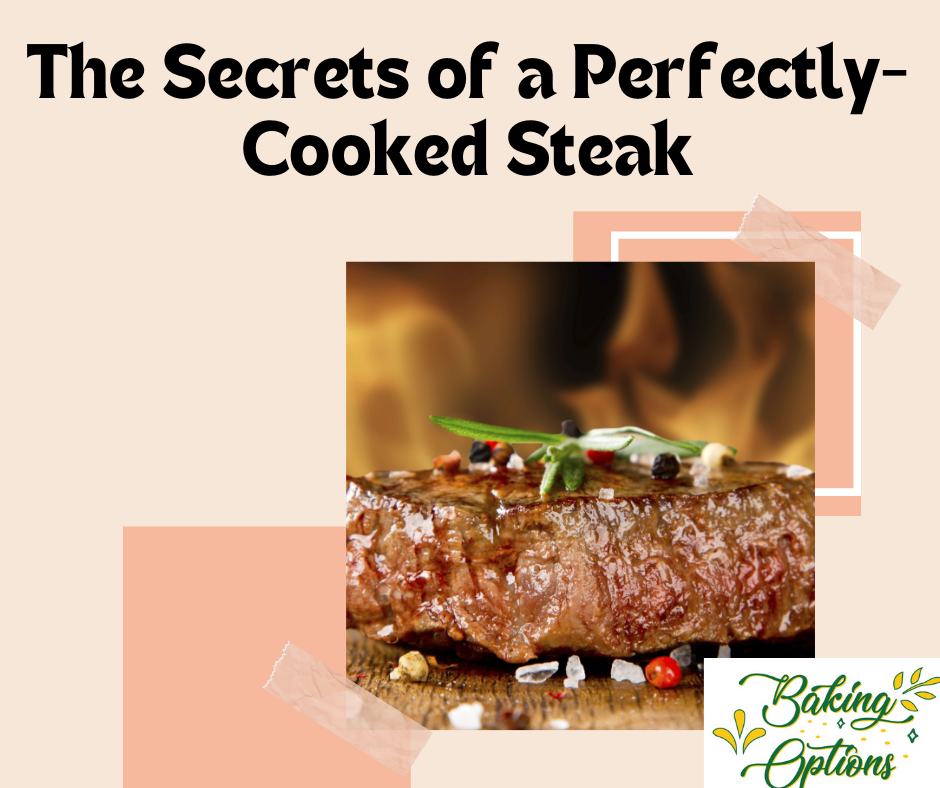I cook a lot of steaks—likely 3 nights a week. (It’s part of my job!)
The most major factor in cooking a steak is to start with wonderful meat. You can do nothing to make a bad, dull steak palatable. The whole point is to get out the unique, tasty heart of the meat. If you buy bad root, you might as well purchase a jar of A-1 Steak Sauce to go with it.
Contents
Choose the right steak

Seeing the best effect you can get your hands on is always the most difficult part of cooking a grand steak, says Ryan Prentiss, one-time executive chef at Detroit’s Prime + Good Steakhouse. He forms by looking for a well-marbled steak. Fat is like, so look for fat, shining red beef, and it has numerous marblings, he says. Marbling is the intramuscular fat recently added to high-quality beef, giving it a ‘marbled’ build. Grain-fed or grain-finished beef will have better marbling than grass-fed beef.”
Next, think of an aged steak. If you’re blessed sufficiently to find a bumbler that has dry-aged beef, I positively advise trying anything aged from 15 to 30 days until you become taught with the flavor, Prentiss says.
Joe Cervantez, administrative chef at Pier 6 in San Leon, Texas, blends, noting that steaks are best eaten at 23 to 28 days of aging. Cervantez means that if you have entry to a vacuum sealer, pack the meat in an airtight stamp until it hits at least 23 days.
Then, like the cut. Chef Dan Sharp of The Meatball Shop in New York City thinks certain steak types are better for grilling. He guides a skirt steak for a hot grill, whereas a New York strip or rib-eye steak is most proper for a cast-iron pan over a burner. Sharp recommends a 3/4- to 1-inch steak for best pan cooking because “the viscosity gives you time to get a nice crust on the outside without overcooking the inside,” he says.
How to Cook the Perfect Steak

Preparation
Food science specialist Harold McGee thinks there are two key unknowns to cooking a perfect steak: “warm meat and regular flips.” We’ll talk about the regular flips in a point, but to make sure the meat is warm, McGee suggests covering the steak in pliable wrap and putting it in warm water for 30-60 minutes before boiling.
A formula from the Wall Street Journal, which has tips from some of New York City’s best steakhouses, suggests allowing the steak to sit at room temperature before cooking. This is also a hint of famous chefs like Alain Ducasse and the team after Hawksmoor, a well-known London steakhouse. McGee’s plan is a good choice if you just have an hour to get the steak ready or if you have strict food safety rules to follow. Otherwise, allowing the steak to sit for two hours provides the same effects.
Drying
The Wall Street Journal, Hawksmoor, and Cook’s Illustrated’s New Best Formula Book all suggest patting the cover of the steak dry before cooking it, which makes meaning to me after my knowledge of hair-dryer a joint of pork in the probe for ideal crackling.
Hawksmoor shows that wet steak will “work to form a decent crust and can choose up some opposed boiled-meat flavours”. It does appear to help a little with the initial browning method, even if once the steaks have been at room temperature for a couple of hours. They’re already a bit drier than they would be straight from the fridge in any case.
Seasoning
Seasoning a steak is important, but not everyone agrees on when to count salt. Yet, many chefs and food aces, like those from Cook’s Illustrated and chef Alain Ducasse, counter. They think adding salt before cooking makes the steak taste okay.
April Bloomfield offers to flavor the steak well with salt and to allow it to rest for 10 minutes before cooking, which helps it cook evenly. Other chefs guide adding salt halfway through cooking. The Hawksmoor chefs even say to use salt that is better than you think is enough to get a flavorful, crispy crust. After trying this, it seems that salting the steak early does help complete a nice, flavorful crust without losing too much juice.
Fat
Hervé This means touching the steak with oil or refined butter before cooking to help it cook nicely. Some chefs, like Nigel Slater, decide but say to operate just a little for a nice shine. Others, like The Wall Street Journal and chef Fearnley-Whittingstall, suggest putting oil or butter in the pan rather. Some prefer flat oils like canola, while others go for butter, leaking, or olive oil. Yet, I’ve found that if you’re cooking a good rib-eye, the lard in the steak itself is usually enough.
Chef Alain Ducasse holds a various policy. He waits until the steak is browned on all sides, then counts butter flavored with garlic. He uses the softened butter to baste the steak as it ends cooking, which gives it a rich flavor. The butter also counts a tasty crust without boiling. Since steak is a treat for most of us, counting butter at the end can make it extra tasty.
Temperature
When it comes to cooking steak, there are two major methods to heat. Some chefs, like Slater and Hawksmoor, advise using very high heat, while others, like Fearnley-Whittingstall and Bloomfield, suggest cooking at a more average temperature. Cook’s Illustrated heats the pan neat hot, then lowers the heat once the steak is in.
The fuss is whether you want a charred flavor or not. Personally, I want a bit of charring, so I’d advise warming the pan as hot as you can, where you can’t hold your hand over it for better than a second.
Ducasse’s way brings another idea. His method is for really thick steaks, about 4-6cm thick, as mentioned by several chefs. Nigel best suggests a steak as thick as your thumb, but that might not be enough to contrast a charred outside and a juicy inside. Wider steaks can handle a more medium heat, allowing them to cook longer without overcooking while still earning a nice caramelized crust, even if it’s not as dimmed as Slater’s style.
Flippin’ steak
About our old friend McGee, who reasons that frequent flipping is the key to wet steak – “frequent turns mean that neither side has the time either to drink or to remove large amounts of heat.
The meat cooks faster, and its outer coatings end up less flashy.” If you’re only cooking it for a pair of minutes on each side, like Slater, I’m not certain the extra juiciness is worth the rejection of a crust, but it creates sense with longer cooking methods, like April Bloomfield or Ducasse. It also allows you to keep a detailed eye on how the cooking is coming along: steak is too sweet a commodity to risk incinerating.
Nigel is also the only chef to take any notice of McGee’s eminently easy hint of pressing down on the steak as it cooks “to improve thermal contact.” I don’t see his steak at all dry, and the crust is the best of any, save the Ducasse masterwork. For fast, weeknight cooking, you can’t go far mistaken with his recipe (although I’d pre-salt the steak sooner than oiling it) – but for a steak that really allows it to be perfect.
See also: How Long Do Brownies Last and Stay Fresh
Conclusion
I prefer high-quality, well-marbled meat to cook a perfect steak and sometimes go for an aged cut for added flavor. Let the steak sit at room temperature or warm it just before cooking, and always pat it dry to ensure a good crust.
Season it well with salt, and use butter or oil to improve the flavor. I cook the steak in a hot pan, adjusting the heat and leaning on its consistency. Flip it frequently to keep it juicy, and end by basting it with butter for a creamy taste. Following these steps, I always get a completely cooked steak.

